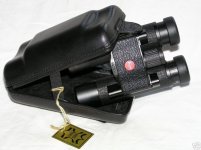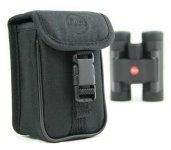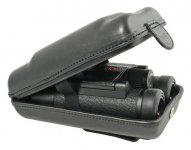Hello
I'm new to this forum, learned a lot here, and after trying out some binos, I've found out that for me top quality compacts are better than mid-priced full-size binos like Vortex Viper or Swift 828. I've had Nikon hgl 8x20 for a few days, but decided to return it (that was before trying the big Vipers), which turned out to be good, because now I'll order 8x20 hgl's again and Leica's ultravid 8x20 and keep one which will be better for my eyes. I liked Nikon's depth of field and field flatness very much not to mention the sharpness, so when I tried Vipers 8x42 their depth of field and sharpness were quite dissapointing.
Can anyone tell me if small Leica's have similar DOF to the Nikons?? The closest focusing distance is 2.4m for the Nikon's, 1.8m for the Leica's, I'm asking because I've read somewhere than closer focusing distance equals shallower DOF, is that true?
I'm new to this forum, learned a lot here, and after trying out some binos, I've found out that for me top quality compacts are better than mid-priced full-size binos like Vortex Viper or Swift 828. I've had Nikon hgl 8x20 for a few days, but decided to return it (that was before trying the big Vipers), which turned out to be good, because now I'll order 8x20 hgl's again and Leica's ultravid 8x20 and keep one which will be better for my eyes. I liked Nikon's depth of field and field flatness very much not to mention the sharpness, so when I tried Vipers 8x42 their depth of field and sharpness were quite dissapointing.
Can anyone tell me if small Leica's have similar DOF to the Nikons?? The closest focusing distance is 2.4m for the Nikon's, 1.8m for the Leica's, I'm asking because I've read somewhere than closer focusing distance equals shallower DOF, is that true?







